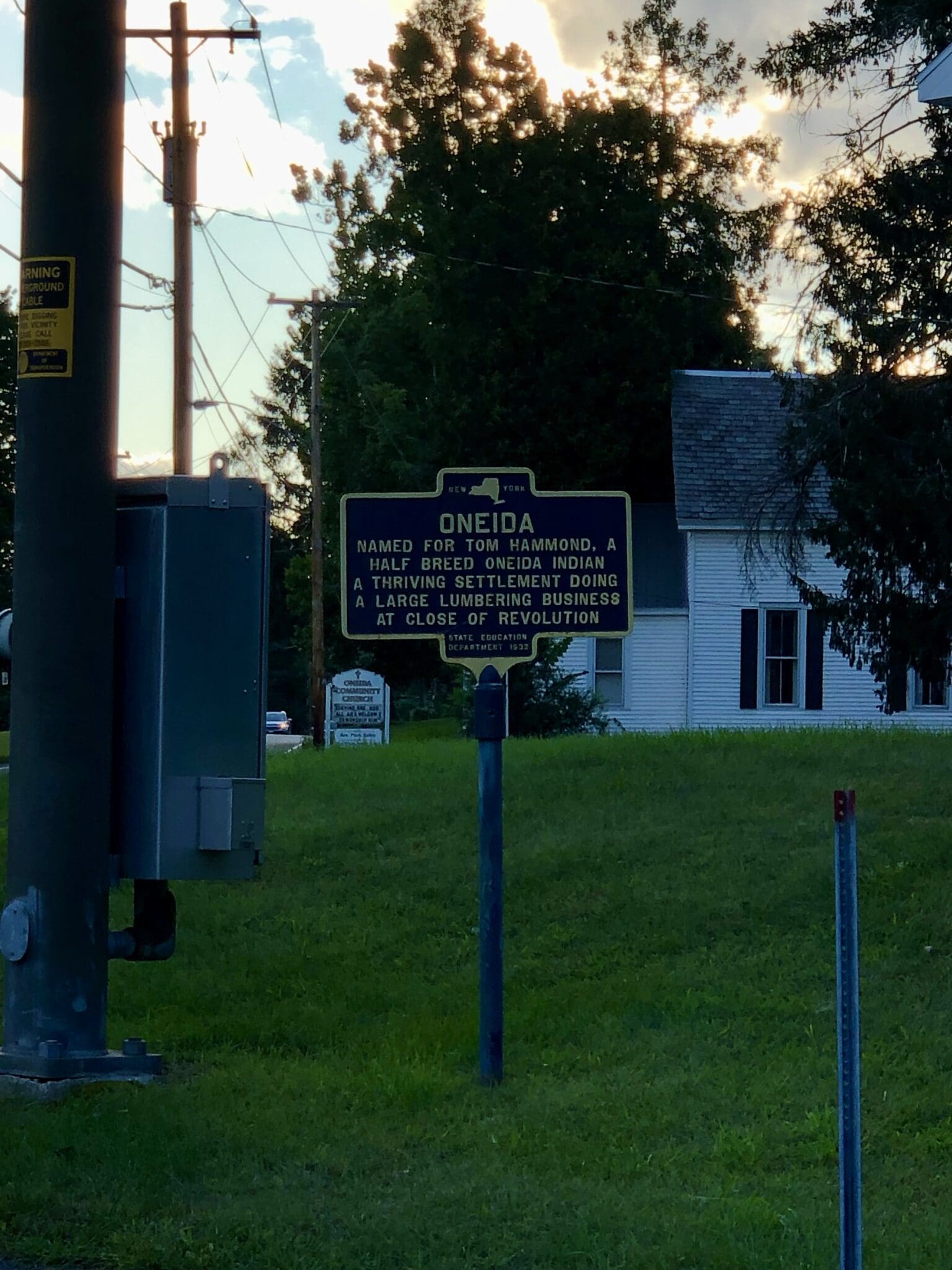
History in the Marking
History is recorded in many ways – sometimes on small roadside placards called historical markers.
You see them all over the country, official looking signs used to designate or commemorate a significant person or event from the past. In total, New York has about 2800 historical markers peppered across the state, often with a State seal forged into blue cast iron with yellow lettering.
I recently became intrigued by a sign I’ve passed many times near my family home in upstate New York. The marker, located on Ridge Road in the Oneida Corners hamlet of Queensbury, reads; “Oneida, named for Tom Hammond, a half-breed Oneida Indian. A thriving settlement doing a large lumbering business at close of revolution.”
Now, I’m not a person who is easily offended, however, I believe most people would agree the terminology used here is almost absurdly outdated. And, in full disclosure, my husband claims some native ancestry, though not nearly half.
I shared an image of the sign in an online group for historical markers which sparked a fury of debate between those who believed the term used was tantamount to a slur, and those who believed the language used in 1932 (when the sign was erected) should be left alone as part of our history. Several online comments evoked singer Cher’s 1973 classic “Half Breed,” asking if we should “cancel” Cher in the name of political correctness. It’s worth noting that the song, not actually written by Cher, is about a woman who hates the term “half-breed” since it’s lobbed against her as an insult.
The whole episode made me wonder, who is writing and regulating these historic markers? The answer is complicated.
From 1926 to 1966, New York State Markers were managed by the Education Department’s State History office, but that is no longer the case. Now, the markers are managed by a patchwork of local individuals, towns, county governments, and historical organizations. New historical markers in New York must be reviewed by the State Education Department. However, folks wishing to place historical markers on private property face no red tape for the approval process whatsoever. The Oneida hamlet marker, for instance, is managed by the Town government of Queensbury, who’s supervisor appoints a Town historian every year. Naturally, historic markers are regulated differently in every state.
NPR recently released a series of stories called “Off the Mark,” which investigated the roughly 180,000 historical markers in the U.S. While the majority of markers are very fun, interesting and quirky, NPR also found all kinds of inaccuracies, conflicting claims, and unfortunately some offensive and problematic signs. Their investigation revealed hundreds of markers around the country that still call Native American “savages” or “hostile” or use racial slurs. Even more markers, particularly in the South, were found to glorify the Confederacy. It turns out one of the more prolific sign-creating groups is The United Daughters of the Confederacy, which has erected over 600 signs. As NPR notes, this proves history is not always written by the victors, sometimes it’s the losers.
Recently, this country has had a reckoning over how history is told, recorded and celebrated. All over the country states are removing confederate statues, and renaming roads and military bases. In 2023, New York State banned public schools from using any Indigenous-related mascots and imagery. Historic Markers, however, seem to fly under the radar. While some states have made efforts to review their existing markers, other states, including Georgia, North Carolina and Tennessee, have made it illegal to change or remove markers.
I’m not suggesting we tear down or revamp the marker system, but sometimes it’s interesting to know the history of how we beget history. As a palate cleanse, I’ll end with a few fun historical marker claims found by NPR’s investigation: The First Glass Oven Door was invented by Ernst Huenefeld in Hamilton County, Ohio; the first bread slicing machine was in Chillicothe Missouri; both Maryland and New Jersey claim to have sent the first telegram; and three different states claim to have invented anesthesia. And finally, in Toronto Canada a sign reads, “This plaque was commemorated on October 10, 2018, to commemorate its own commemoration. Plaques like this one are an integral part of the campaign to support more plaques like this one.”